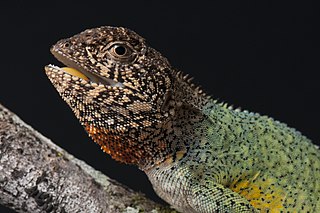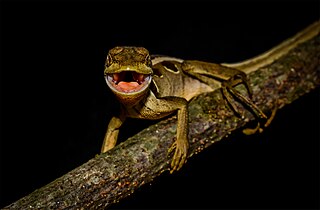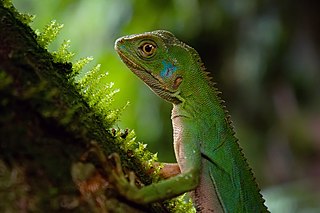
Ares is the Greek god of war and courage. He is one of the Twelve Olympians, and the son of Zeus and Hera. The Greeks were ambivalent towards him. He embodies the physical valor necessary for success in war but can also personify sheer brutality and bloodlust, in contrast to his sister, the armored Athena, whose martial functions include military strategy and generalship. An association with Ares endows places, objects, and other deities with a savage, dangerous, or militarized quality.
In Greek mythology, Enyo is a war-goddess, frequently associated with the war-god Ares. The Romans identified her with Bellona.
Enyalius or Enyalios in Greek mythology is generally a son of Ares by Enyo and also a byname of Ares the god of war. Though Enyalius as a by-name of Ares is the most accepted version, in Mycenaean times Ares and Enyalius were considered separate deities. Enyalius is often seen as the God of soldiers and warriors from Ares cult. On the Mycenaean Greek Linear B KN V 52 tablet, the name 𐀁𐀝𐀷𐀪𐀍, e-nu-wa-ri-jo, has been interpreted to refer to this same Enyalios. It has been suggested that the name of Enyalius ultimately represents an Anatolian loanword, although alternative hypotheses treat it as an inherited Indo-European compound or a borrowing from an indigenous language of Crete.

George Albert Boulenger was a Belgian-British zoologist who described and gave scientific names to over 2,000 new animal species, chiefly fish, reptiles, and amphibians. Boulenger was also an active botanist during the last 30 years of his life, especially in the study of roses.

John Henry Leech was an English entomologist who specialised in Lepidoptera and Coleoptera.
Xanthika or Xandika was an ancient Macedonian annual festival, shortly before the vernal equinox, in the month Xanthikos, containing a spring purification march of the army between the two halves of a sacrificed dog, which is associated with the assimilation of the new year's ephebes into the army. According to a fragment of Polybius 23.10 they make offerings to Xanthus as a hero, and perform a purification of the army with horses fully equipped. There was also a Spartan military festival of youths who sacrificed a dog to Enyalius.

Enyalioides laticeps, the Amazon broad-headed wood lizard, is a dwarf iguanian lizard abundantly found in Amazonian rainforests. They are semi-arboreal and mostly live in forests. Other names for it include broad-headed wood lizards, Big-headed stick lizards, Guichenot's Dwarf Iguana, Amazon Forest Dragon, or Amazon Dwarf-Iguana. It is a small, ornamented lizard that grows up to 157 mm (0.5 ft) long and have very high vertebral crests along their backs. They change colors based on environmental factors. Amazon broad-headed wood lizards rely on rapid running to move around; however, they spend the vast majority of their time motionless, blending into the rainforest background, and ambushing prey. When attacked by predators, E. laticeps may stay motionless like a wood stick to avoid predation. When found by predators, it may suddenly spring into motion, quickly reatreting to burrows in the ground.

Enyalius is a genus of lizards in the family Leiosauridae. The genus is native to Brazil and Uruguay.
Enyalius bibronii is a species of lizard in the family Leiosauridae. It is endemic to Brazil.

Enyalius bilineatus, the two-lined fathead anole, is a species of lizard in the family Leiosauridae. It is endemic to Brazil.
Enyalius boulengeri, also known commonly as the Brazilian fathead anole, is a species of lizard in the family Leiosauridae. The species is endemic to Brazil.
Enyalius brasiliensis the Brazilian fathead anole, is a species of lizard in the family Leiosauridae. It is native to Brazil and Uruguay.
There are two species of lizard named Brazilian fathead anole:
Enyalius capetinga is a species of lizard in the family Leiosauridae. It is endemic to Brazil.

Enyalius catenatus, Wied's fathead anole, is a species of lizard in the family Leiosauridae. It is endemic to Brazil. They can be found in the Atlantic Forest and can be found in other humid forests.

Enyalius iheringii, Ihering's fathead anole, is a species of lizard in the family Leiosauridae. It is endemic to Brazil.
Enyalius leechii, Leech's fathead anole, is a species of lizard in the family Leiosauridae. It is endemic to Brazil.
Enyalius perditus is a species of lizard in the family Leiosauridae. It is native to Brazil.
Enyalius pictus is a species of lizard in the family Leiosauridae. It is native to Brazil.





